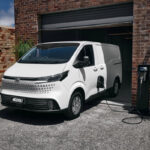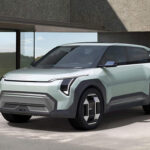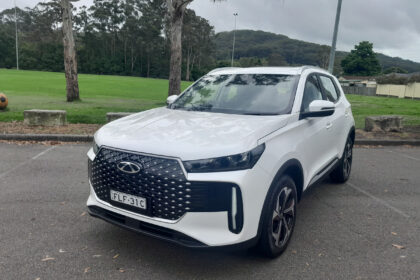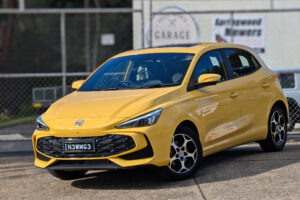
Tesla Charging Bay
The Electric Vehicle Council (EVC), the national body representing the electric
vehicle industry in Australia, has moved to dispel some of the common myths about
electric vehicles.
MYTH 1: NOT ENOUGH DRIVING RANGE
Today’s EVs have enough battery range to meet the average Australian’s driving
needs for over a week.
Current EVs have an average battery range of 480km but the technology is
advancing so rapidly that new models can drive for almost 550km on a single
charge.
The average Australian drives 38km per day so an EV owner can go for at least 10
days without a recharge. Unlike petrol cars, you can recharge at home or anywhere
with access to electricity.
MYTH 2: CHARGING TAKES TOO LONG
Charging times are falling quickly as technology advances. Residential chargers are
able to fully charge EVs in around six to eight hours, depending on the vehicle’s
capacity. This means you can easily charge your car overnight.
Public fast chargers are able to get you back on the road much faster. Leave your
car at a charger while you go shopping or to work and in three hours, it’ll be fully
charged. Ultra-rapid chargers can add 300km of range in 10 minutes.

Kia EV6 GT
MYTH 3: THERE’S NOWHERE TO CHARGE EVS
While 80 per cent of EV drivers globally charge their EV at home, there is still a need
for public charging infrastructure. An ever-expanding network of public charging
infrastructure is being installed across Australia.
Private companies have been building networks along highways, and both federal
and state governments are now investing too.
Local councils are supporting local communities to make the change by installing
chargers in local public areas, and it is increasingly common to see EV chargers in
shopping centres.
If you check out the charger map on our website, you can get an idea of coverage.
And that coverage is only going to keep getting better as uptake increases and more
charging stations are rolled out.
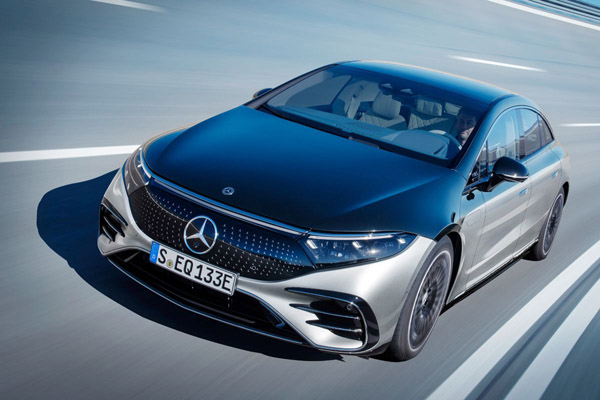
Mercedes-Benz EQS
MYTH 4: EXPENSIVE TO BUY
The upfront costs of EVs are currently more expensive than conventional vehicles,
however powering your EV is much cheaper – about 70 per cent cheaper per
kilometre in fact. That means the average EV driver saves $1600 on fuel costs each
year.
There are also a growing number of new mid-range EVs available in Australia this
year. these include the MG ZS EV ($44,990), BYD Atto 3 ($48,011) and Nissan Leaf
($50,990) plus on-road costs.
EVs are only going to become more affordable with time. According to Bloomberg,
falling battery prices mean that the total ownership costs of EVs is already the same
as conventional vehicles and that upfront costs will be cheaper by 2025. As
competition, investment, and innovation increase, the costs of EVs will continue to
fall while conventional vehicle prices stay the same.

MG ZS EV
MYTH 5: EXPENSIVE TO RUN
EVs have lower running costs than internal combustion engine vehicles (ICEVs).
Fewer moving parts mean that EVs require less maintenance. With an EV you don’t
need to replace filters and spark plugs, change oil, or repair the transmission, head
gasket or engine.
In 2018, maintenance and servicing savings of an EV were estimated at $300-$400
a year. Contrary to a popular myth, EV batteries last as long as the lifetime of your
car. Most vehicle manufacturers offer an 8-year or 160,000km warranty on batteries.
Another massive saving from EV ownership is fuel. Battery EVs don’t need any
petrol or diesel and are charged with electricity. The average Australian drives
15,000km and spends around $2160 on petrol per year (14 cents per km).
An EV travelling 15,000km would cost around $600 per year (4 cents per km) in
electricity costs.
MYTH 6: EVS ARE INFERIOR PERFORMERS
Unlike conventional vehicles, EVs deliver full torque instantly, meaning they can
accelerate much faster than equivalent combustion engine vehicles.
EVs also often have their batteries placed along the bottom of the vehicle, lowering
the centre of gravity and providing better handling and cornering.

Hyundai Ioniq 5
MYTH 7: EVS ARE A PASSING FAD
Around the world, the EV industry is booming. In 2022 10.2 million EVs were sold
worldwide, or 14 percent of total vehicle sales. China led the way with 5.9 million or
30 percent with Europe sales at 2.6 million (23%)
Australia is lagging because of a lack of EV policy leadership from governments. In
2022 just 3.1% of total sales were fully-electric vehicles although that ratio has
jumped significantly to 7.4% in the first half of 2023. Leading the way was the Tesla
Model Y which was the highest selling vehicle behind the Toyota HiLux.
As state and federal governments are belatedly recognising the importance of EVs
and more and more lower cost EV models come on the market along with hundreds
of new chargers being built across the country, EV sales will continue to grow.
MYTH 8: JUST AS BAD FOR THE ENVIRONMENT
Battery EVs have zero exhaust emissions, so that alone makes them better for the
environment than an internal combustion engine vehicle (ICEV).
Research shows that even if an EV is charged by coal-fired electricity, it still
generates lower net emissions that ICEVs.
As grids become cleaner, EVs become cleaner too. It is an unavoidable truth that the
only way for Australian states to reach their net zero emission targets is with electric
vehicles.
Additionally, EV batteries can be used well after their EV end-of-life. Once a battery
reaches 70 per cent capacity, it is no longer fit for use in a vehicle.
However, vehicle manufacturers and private companies are leading the charge in
battery recycling and re-purposing, ensuring that zero emissions vehicles really have
a low impact to the environment.
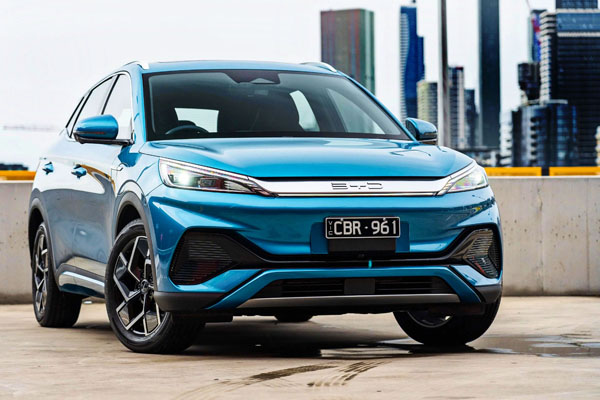
BYD Atto 3
MYTH 9: BATTERIES ARE DANGEROUS AND COSTLY
Driving a vehicle with a battery is no more dangerous than driving a traditional
Internal Combustion Engine vehicle (ICEV). In fact, evidence suggests that lithium-
ion batteries used in EVs are in fact as safe or even safer than conventional fuel.
There are numerous studies that show that fires in EVs are no more likely or even
less likely to occur than fires in ICEVs.
In Australia, Fire and Rescue organisations do not treat EVs as any more dangerous
than ICEVs.
MYTH 10: EVS WILL CAUSE BLACKOUTS
Managed correctly, EVs can increase the reliability of the grid, while reducing the
unit price of electricity for everyone, even those who don’t drive an EV.
New EV models are now enabling battery discharging, which means that during
times of peak demand EVs can put electricity back into the household or grid. This
would actually reduce the chance of blackouts by flattening peak demand.




